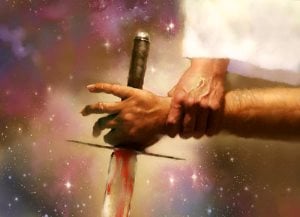Daily Lesson for Friday 7th of March 2025
Read Ellen G. White, “The Power of Satan,” Pages 341–347, in Testimonies for the Church, vol. 1
“Fallen man is Satan’s lawful captive. The mission of Christ was to rescue him from the power of his great adversary. Man is naturally inclined to follow Satan’s suggestions, and he cannot successfully resist so terrible a foe unless Christ, the mighty Conqueror, dwells in him, guiding his desires, and giving him strength. God alone can limit the power of Satan. He is going to and fro in the earth, and walking up and down in it. He is not off his watch for a single moment, through fear of losing an opportunity to destroy souls. It is important that God’s people understand this, that they may escape his snares. Satan is preparing his deceptions, that in his last campaign against the people of God they may not understand that it is he. 2 Corinthians 11:14: ‘And no marvel; for Satan himself is transformed into an angel of light.’ While some deceived souls are advocating that he does not exist, he is taking them captive, and is working through them to a great extent. Satan knows better than God’s people the power that they can have over him when their strength is in Christ. When they humbly entreat the mighty Conqueror for help, the weakest believer in the truth, relying firmly upon Christ, can successfully repulse Satan and all his host. He is too cunning to come openly, boldly, with his temptations; for then the drowsy energies of the Christian would arouse, and he would rely upon the strong and mighty Deliverer. But he comes in unperceived, and works in disguise through the children of disobedience who profess godliness.”—Ellen G. White, Testimonies for the Church, vol. 1, p. 341.
Discussion Questions
|
 (0)
(0)Source: https://ssnet.org/blog/25a-10-further-thought-rules-of-engagement/




